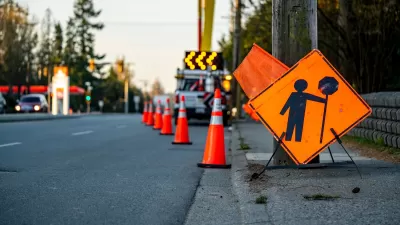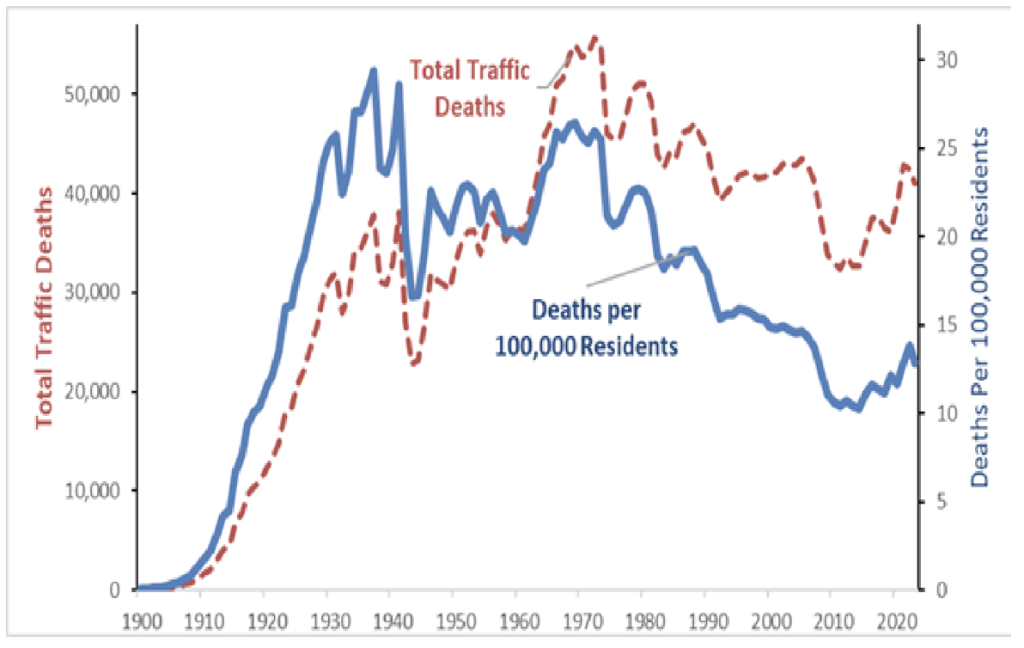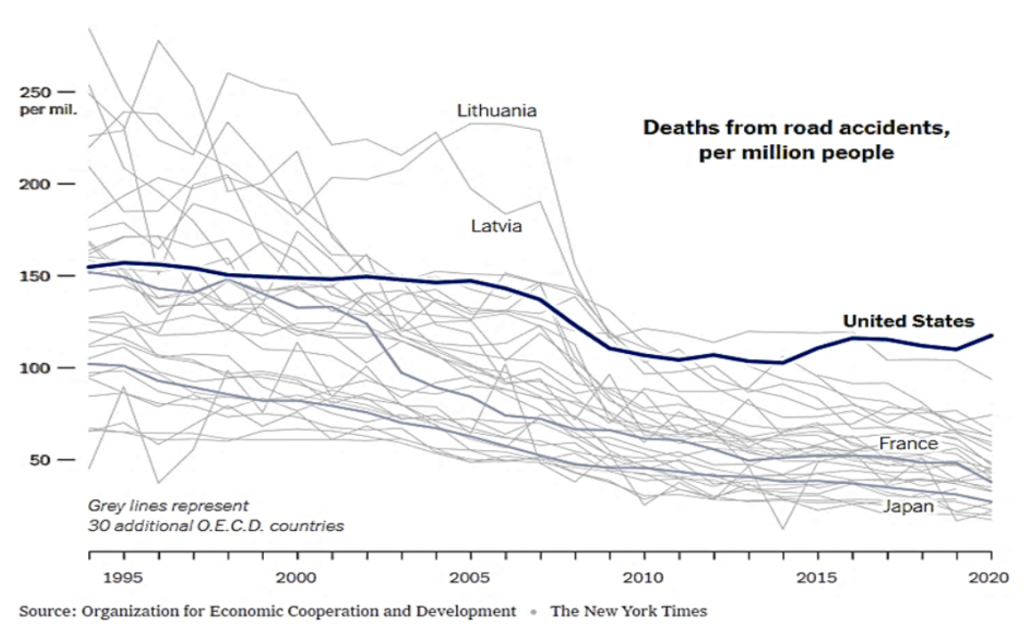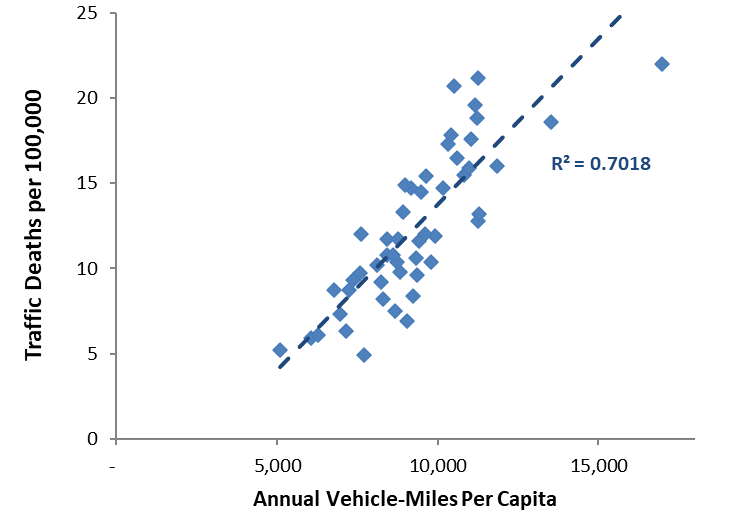Current U.S. traffic safety programs are failing to reduce crash rates. A new traffic safety paradigm expands the scope of strategies that can be used to reduce crashes, which increases effectiveness and total benefits.

The United States is failing to increase traffic safety. Despite decades of efforts, motor vehicle crashes continue to impose huge social costs. Although traffic casualty rates declined during most of the twentieth century, they have recently increased, as illustrated below.
Total and per capita U.S. traffic fatalities (FHWA Data)

During the last three decades peer countries have reduced their traffic death rates far more than the U.S., indicating that large safety gains are possible.
Traffic death rates compared

These trends suggest that new approaches are needed to achieve future goals such as Vision Zero. This requires a paradigm shift, a change in the ways we evaluate risks and potential safety strategies
Steve Polzin's recent Planetizen blog, Has Progress on Travel Safety Run Off the Road? reflects the old traffic safety paradigm. It argues that traffic crashes are primarily caused by bad driving and so recommends targeted technologies, education and enforcement programs, although these have proven ineffective. Even worse, he implies that increases in active and micromode travel increase risks, although extensive research shows that per capita crash rates decline as active mode shares increase in a community, a widely recognized effect called "safety in numbers".
My report A New Traffic Safety Paradigm, Professor Wes Marshall's book Killed by a Traffic Engineer, and numerous other studies indicate that exposure — the amount that people drive — is a key risk factor.
Traffic Fatalities Versus Mileage for U.S. States

This has important implications for traffic safety planning. It indicates that policies and projects that induce additional vehicle travel are likely to increase crash rates, and vehicle travel reduction strategies (multimodal planning, TDM incentives and Smart Growth development policies) can significantly increase safety in addition to their other benefits. This is important because currently VMT reduction strategies are described primarily as ways to reduce congestion and emissions; their safety benefits are generally overlooked or undervalued.
This issue is, of course, complex. Vehicle travel reductions are not the only way to reduce crashes -- traditional traffic safety strategies are also important, and the two approaches are often complementary. For example, many targetted traffic safety strategies such as graduated driver's licenses, special driver's tests for seniors and anti-impaired driving campaigns become more effective and politically acceptable if implemented with multimodal planning, TDM incentives and Smart Growth policies so youths, seniors and drinkers can find convenient alternatives to driving.
What do you think? Are we ready for a new traffic safety paradigm? Should vehicle travel reductions be recognized as traffic safety strategies?

Planetizen Federal Action Tracker
A weekly monitor of how Trump’s orders and actions are impacting planners and planning in America.

Maui's Vacation Rental Debate Turns Ugly
Verbal attacks, misinformation campaigns and fistfights plague a high-stakes debate to convert thousands of vacation rentals into long-term housing.

Restaurant Patios Were a Pandemic Win — Why Were They so Hard to Keep?
Social distancing requirements and changes in travel patterns prompted cities to pilot new uses for street and sidewalk space. Then it got complicated.

In California Battle of Housing vs. Environment, Housing Just Won
A new state law significantly limits the power of CEQA, an environmental review law that served as a powerful tool for blocking new development.

Boulder Eliminates Parking Minimums Citywide
Officials estimate the cost of building a single underground parking space at up to $100,000.

Orange County, Florida Adopts Largest US “Sprawl Repair” Code
The ‘Orange Code’ seeks to rectify decades of sprawl-inducing, car-oriented development.
Urban Design for Planners 1: Software Tools
This six-course series explores essential urban design concepts using open source software and equips planners with the tools they need to participate fully in the urban design process.
Planning for Universal Design
Learn the tools for implementing Universal Design in planning regulations.
Heyer Gruel & Associates PA
JM Goldson LLC
Custer County Colorado
City of Camden Redevelopment Agency
City of Astoria
Transportation Research & Education Center (TREC) at Portland State University
Jefferson Parish Government
Camden Redevelopment Agency
City of Claremont






























